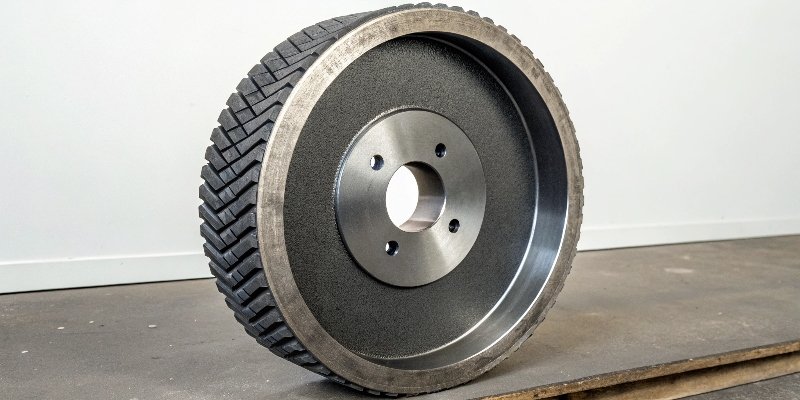
Struggling with grinding hard steels? Frequent wheel changes and poor finishes can hurt your bottom line. We have found that CBN wheels provide the durability and precision you need.
CBN (Cubic Boron Nitride) wheels are used for precision grinding of hard ferrous materials. Common applications include sharpening high-speed steel tools, finishing hardened steel dies, and grinding automotive engine parts like camshafts and crankshafts, ensuring high precision and long life.
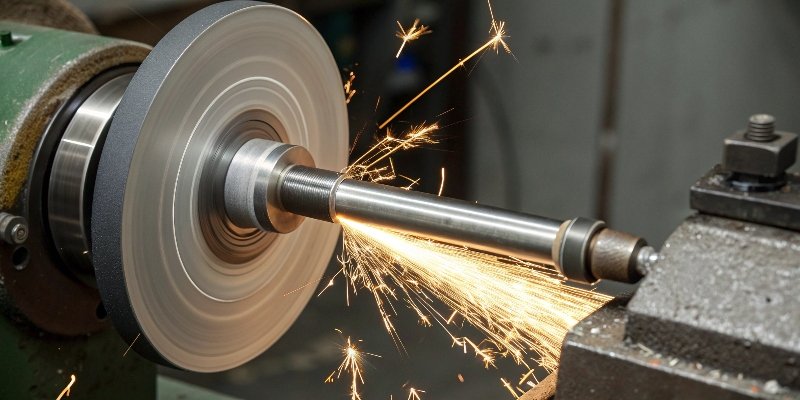
These applications show how versatile CBN wheels1 are. But to really understand their value, we need to look closer at what makes them so effective. Let’s break down the specific jobs where these wheels excel and why they have become so important in modern manufacturing.
What is a CBN grinding wheel used for?
Picking the right wheel for tough materials can be confusing. The wrong choice leads to wasted material and time. We use CBN wheels for specific, demanding grinding tasks.
CBN grinding wheels are used for grinding hard ferrous metals with a hardness greater than HRC 50. This includes high-speed steel (HSS), tool steel, and hardened alloy steels. They are essential in automotive, aerospace, and tool and die manufacturing industries.
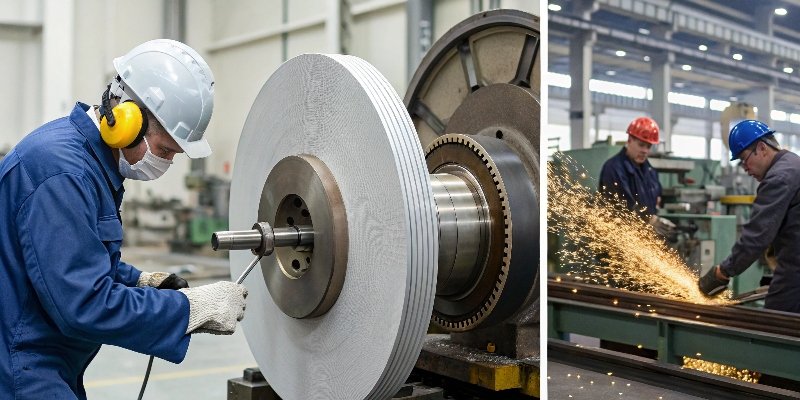
In our nearly 30 years of manufacturing experience, we have seen CBN wheels become essential in several key industries. They solve problems where conventional abrasives, like aluminum oxide, just can’t keep up. The main reason is that conventional wheels wear out too quickly against hardened steel. This leads to frequent downtime for wheel changes and makes it hard to hold tight tolerances. CBN is the second hardest material after diamond, so it cuts these hard materials easily.
Key Industry Uses
The thermal stability2 of CBN is another huge advantage. It can withstand very high temperatures without reacting chemically with the iron in steel. This prevents burning and protects the surface of the workpiece. Let’s look at some specific examples from industries that rely on our RL brand CBN wheels for their most critical operations.
| Industry | Specific Application | Material | Benefit Provided by CBN |
|---|---|---|---|
| Automotive | Grinding camshafts & crankshafts | Hardened Alloy Steel | High precision, long wheel life |
| Aerospace | Shaping turbine blades | Heat-Resistant Alloys | Maintains material integrity under heat |
| Metalworking | Sharpening HSS drills & end mills | High-Speed Steel | Fast, cool cutting action |
| Tool & Die | Finishing stamping dies & molds | Hardened Tool Steel | Excellent surface finish (Ra ≤ 0.4 μm) |
This versatility and performance on hard ferrous metals is why so many of our B2B clients choose CBN.
What is the best grit for a CBN wheel?
Choosing the wrong grit size can ruin your workpiece. A rough finish or slow cutting wastes time and resources. We have learned that selecting the right grit is simple if you know your goal.
The best grit for a CBN wheel depends on the job. Use a coarse grit (80-120) for rapid material removal and rough grinding. For general-purpose sharpening, a medium grit (150-240) is ideal. Use a fine grit (300+) for high-precision finishing.
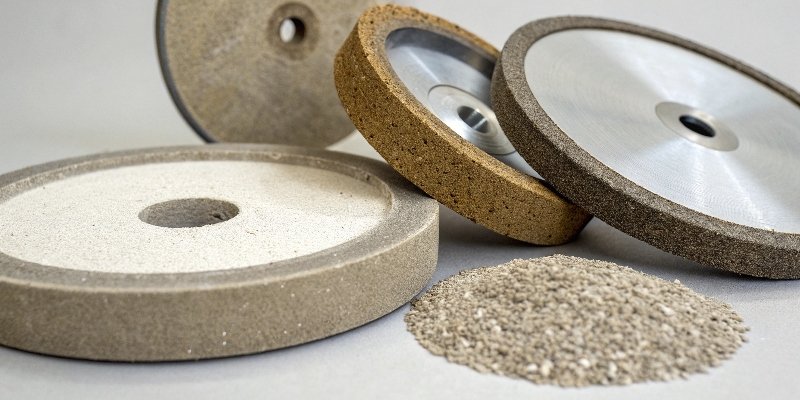
Selecting the right grit size is critical for getting the result you want. It’s a balance between how fast you need to remove material and the quality of the surface finish you need. In our factory, we guide customers based on their specific application because it’s not a one-size-fits-all situation. A small change in grit can make a big difference in performance and final product quality.
Coarse Grits (80 to 120)
We recommend coarse grits when the main goal is speed. This is best for heavy stock removal. For example, if you need to correct the shape of a tool or do the first grinding pass on a rough part. The larger abrasive particles cut aggressively. They will, however, leave a rougher surface. This makes it a good first step in a multi-stage grinding process.
Medium Grits (150 to 240)
This is the most common range we sell. It offers a great balance between cutting speed and surface finish. We see our customers use this range for sharpening tools like drills and end mills. For these jobs, you need a sharp edge and a reasonably smooth finish. It’s a very practical and popular choice for everyday shop use.
Fine Grits (300 and finer)
When the final surface finish is the top priority, fine grits are necessary. These are used for precision grinding of components like bearings, gears, or molds. The smaller abrasive particles remove very little material with each pass. This creates a mirror-like finish and helps you achieve very tight dimensional tolerances.
Which is better, a CBN grinding wheel or a diamond grinding wheel?
Confused about whether to use diamond or CBN? The wrong choice can lead to poor results and a ruined wheel. We know the simple rule for choosing correctly every time.
Neither is "better" overall; they have different jobs. Diamond wheels are best for grinding non-ferrous and non-metallic materials like carbide, ceramic, and glass. CBN wheels are superior for grinding hard ferrous materials like steel, cast iron, and superalloys.
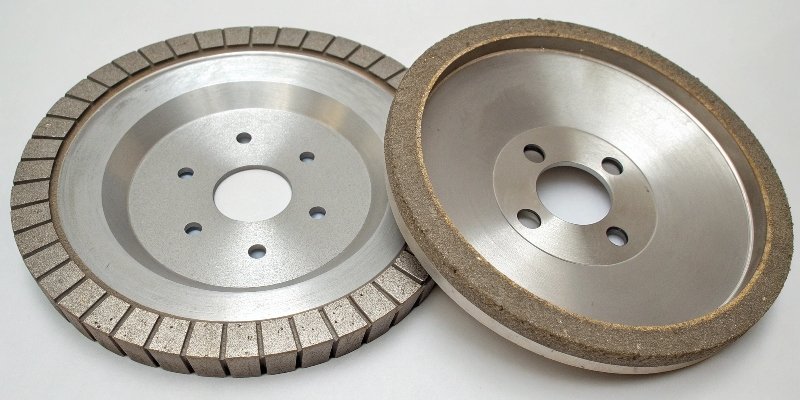
As a manufacturer of both diamond and CBN wheels, we get this question a lot. The answer always comes down to the material you are grinding. It’s a fundamental principle of superabrasives3. Using the wrong wheel is not just inefficient. It can destroy both the wheel and the workpiece you are trying to make. The right choice saves money, time, and materials.
The Carbon Rule
The key difference is chemistry. Diamond is a form of carbon. Steel contains iron. When you grind steel, the high heat causes a chemical reaction between the carbon in the diamond and the iron in the steel. This reaction breaks down the diamond abrasive, causing the wheel to wear out very quickly. CBN is made of boron and nitrogen. It does not contain carbon, so it remains stable at high temperatures when grinding steel. Here is a simple breakdown we use to guide our clients.
| Feature | Diamond Wheel | CBN Wheel |
|---|---|---|
| Best For | Non-ferrous & non-metallic materials | Hard ferrous materials |
| Examples | Tungsten Carbide, Glass, Ceramics, Granite | High-Speed Steel, Tool Steel, Cast Iron |
| Hardness (Knoop) | ~7000 | ~4500 |
| Chemical Reaction | Reacts with iron at high temperatures | Thermally stable with iron |
So, while diamond is technically harder than CBN, its chemical reaction with steel makes it the wrong choice. CBN’s thermal and chemical stability make it the only correct option for hard steel.
Why is CBN generally preferred over diamond for machining steels?
It seems logical to use the hardest abrasive on hard steel. But using diamond wheels on steel leads to failure. We can explain the simple science behind this common mistake.
CBN is preferred for steels because of its chemical and thermal stability. Diamond, which is carbon-based, reacts with the iron in steel at high grinding temperatures. This reaction, called graphitization, rapidly degrades the diamond. CBN does not react, ensuring a longer wheel life.
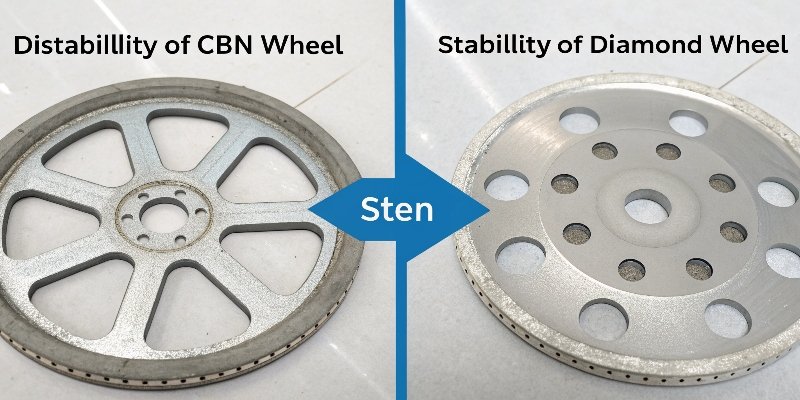
This question gets to the core reason why CBN was developed. The industry needed a better way to grind steel, and CBN was the answer. While diamond is the hardest material known, hardness is not the only factor in grinding performance. For grinding steel, chemical compatibility and heat resistance are much more important.
Thermal Stability is Key
Grinding generates immense heat right where the wheel touches the workpiece. Diamond is stable up to about 700°C when oxygen is present. CBN, however, is stable up to 1,200°C. This higher heat tolerance means it can handle the intense temperatures of grinding hard steels without breaking down. This allows our customers to use higher grinding speeds and feeds, which increases their productivity.
The Chemical Reaction Problem
As we’ve mentioned, the main issue is the chemical reaction. At high temperatures, the carbon atoms in the diamond wheel are attracted to the iron atoms in the steel workpiece. The carbon essentially dissolves into the steel, causing the diamond crystals to wear away extremely fast. We call this "chemical wear." CBN is made of boron and nitrogen, which are chemically inert with iron. This means CBN wears down mechanically, through abrasion, which is a much slower process. This results in a much longer wheel life and a more cost-effective operation for our clients.
Conclusion
In summary, CBN wheels are the best choice for grinding hard ferrous metals. Their thermal stability and long life deliver precision and efficiency in demanding industrial applications.
-
Explore the advantages of CBN wheels for grinding hard materials and how they can enhance your manufacturing process. ↩
-
Learn about the significance of thermal stability in grinding applications and its impact on performance. ↩
-
Discover the role of superabrasives in modern manufacturing and their advantages over traditional abrasives. ↩
Written by
leeon
You may also be interested in:
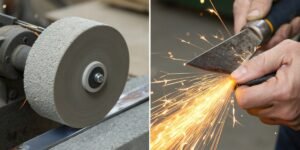
What is the difference between grinding and honing a blade?
A dull blade is a frustrating problem. It slows down production and ruins your workpiece. Using the wrong technique to fix it can cause permanent
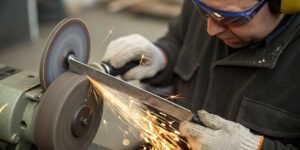
How to sharpen a knife on a bench grinder?
Is your dull knife slowing you down? A bench grinder seems like a quick fix, but you’re worried about ruining the blade. You need a
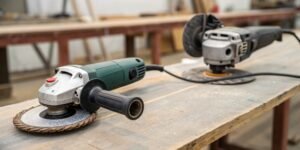
Can you use an angle grinder as a sander?
Your sanding project is tough, and your regular sander is not powerful enough. You look at your angle grinder. It has the power, but is
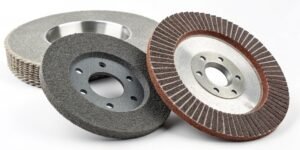
How to judge the quality of a grinding wheel?
Choosing the wrong wheel wastes money and ruins parts. Poor quality leads to downtime and rejection. A few key checks can guarantee you pick the

What is low stress grinding?
Struggling with parts failing due to hidden stress from grinding? This common issue causes cracks and reduces component life, costing you money. Low stress grinding
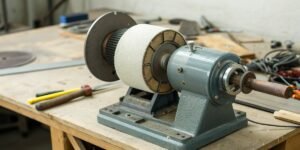
The rotor in my reluctance motored bench grinder won't spin?
Your bench grinder is humming, but the wheel isn’t moving. This frustrating problem can stop your work dead. It’s a common issue, and the fix
